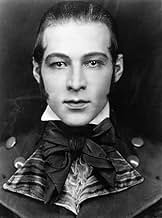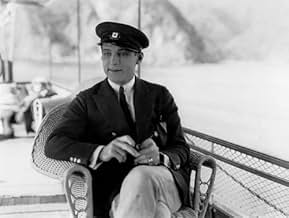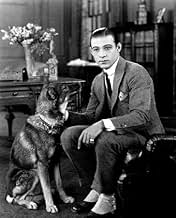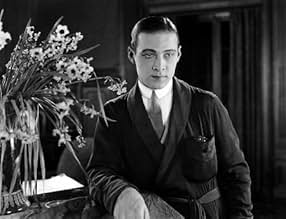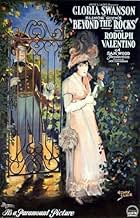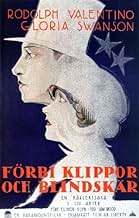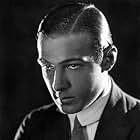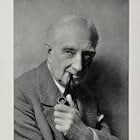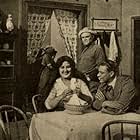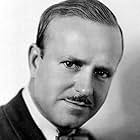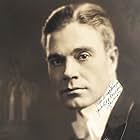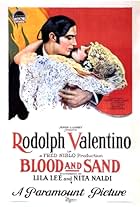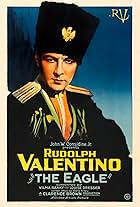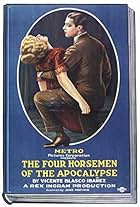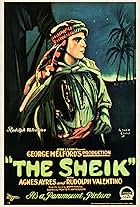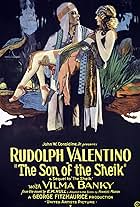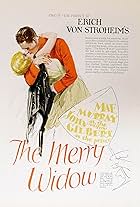IMDb RATING
6.7/10
2.4K
YOUR RATING
A young woman marries an older millionaire and then falls in love with a handsome nobleman on her honeymoon.A young woman marries an older millionaire and then falls in love with a handsome nobleman on her honeymoon.A young woman marries an older millionaire and then falls in love with a handsome nobleman on her honeymoon.
Frank Butler
- Lord Wensleydon
- (as F. R. Butler)
Gino Corrado
- Guest at Alpine Inn
- (uncredited)
Mary Foy
- Clementine - Theodora's Older Sister #1
- (uncredited)
Lucien Littlefield
- Sir Lionel Grey's Associate
- (uncredited)
Larry Steers
- Guest at Beachleigh
- (uncredited)
Adele Watson
- Sarah - Theodora's Older Sister #2
- (uncredited)
Leo White
- Pageant Director
- (uncredited)
- Director
- Writers
- All cast & crew
- Production, box office & more at IMDbPro
Storyline
Did you know
- TriviaLost for many decades since its original release, a copy of this film was discovered in April 2003 in Haarlem (The Netherlands) in a private collection. It was restored by the Nederlands Film Museum and the Hagheflim Conservation and was screened in 2005, complete with English dialogue screens in place of the original Dutch, at the Cannes film festival. It made its television debut on May 21, 2006, on Turner Classic Movies as part of a nine-film tribute to Rudolph Valentino.
- GoofsWhen Husein Ben Ali and his men are being chased away by the soldiers, a crew member steps in front of the camera during the wide shot of the scene.
- Quotes
[last lines]
Lord Hector Bracondale: Darling, we have passed the rocks and here are the safe waters beyond.
- Alternate versionsIn 2005, The Nederlands Filmmuseum copyrighted a restored version of this film with new intertitles (based on the original continuity script) and a new musical score by Henny Vrienten. It ran 80 minutes. which included about 2 minutes of explanatory remarks and restoration credits, was distributed by Milestone and broadcast on the Turner Classic Movies channel in 2006. The IMDb credits are taken from this version, but they probably differ from the original credits. In 1922, Valentino's screen given name was Rodolph and spelled that way in reviews. Cast lists were not common; credited actors were in the intertitles right before they appeared onscreen. If that were the case for this movie, Helen Dunbar, 'Raymond Brathwayt' and Frank Butler would be marked uncredited, since their names and their character names do not appear in the intertitles.
- ConnectionsFeatured in 7 Classic Movie Tricks That Led to Modern CGI (2021)
Featured review
When the restored version of Beyond the Rocks received its American premiere earlier this week at the New York Film Festival I was fortunate enough to be in the audience. The amazing story of this film's recovery and reconstruction by the staff of Amsterdam's Nederlands Filmmuseum is told elsewhere on this page, so it's not necessary to repeat it here; for my part, ever since I first heard about this rediscovery over a year ago I've been curious about one thing only, and that's the quality of the movie itself. It's great that Beyond the Rocks has been found, but how good is it?
Well, it was certainly exciting to see the movie with an audience, and a thrill to see Gloria Swanson and Rudolph Valentino in something "new," but frankly I don't think anyone will mistake Beyond the Rocks for a masterpiece of the silent cinema. It's like a sumptuously produced Harlequin romance, a 1922 soap opera in which the two stars model lots of great outfits while they suffer nobly in picturesque locales. I'm not saying it's a bad movie, it's actually a lot of fun on its own terms, but it's the kind of fun you get from reading a "guilty pleasure" beach book. There's nothing wrong with a beach book as long as you're not expecting Chekhov, and nothing wrong with this film as long as you're not expecting Murnau.
The screenplay was based on a novel by Elinor Glyn, an eccentric lady best known for coining the term "It" to describe sex appeal. Madame Glyn (as she preferred to be addressed) is sometimes called the Barbara Cartland of her day, but Glyn's novels were far more outlandish than most anything you'll find in today's bookstores. Her plots were just flimsy excuses to place aristocratic lovers in exotic, secluded settings fit for delivering purple-prose speeches and engaging in steamy love-making on tiger rugs. Just consider the names of some of her characters: Princess Ardacheff, Madame Zalenska, Lord Bracondale, and let's not forget Bracondale's jilted fiancée, the unfortunate Morella Winmarleigh. Considering the silly source material it's remarkable that the filmmakers who adapted Beyond the Rocks for the screen managed to convert Glyn's tale into something halfway respectable, with a touch of dignity. At the screening I attended there were occasional giggles at moments of blatant hokum in the plotting, but I wouldn't call the film absurd over all. I think it's safe to say (although I haven't read the novel) that this is a case where the movie may be considerably better than the book.
Before seeing the film I wondered how two such iconic figures as Gloria Swanson and Rudolph Valentino would pair on screen. Having seen it, my conclusion is that although Rudy looks great and gives a nicely nuanced performance, this is Gloria's picture all the way. Her character is at the center of the story, and it's what happens to her that matters. Swanson rises to the occasion with a stylized performance that is larger than life without ever going over the top, not even in the wrap-up sequence in the dunes of the Sahara, when the story reaches its climax and emotions peak. Gloria retains her poise and, like all the best silent stars, conveys a great deal with her eyes. Swanson was often called a "clothes horse," and throughout this film she and her co-star are both given the opportunity to show off a number of terrific costumes, most notably in a couple of gratuitous historical flashbacks apparently included solely to give the stars the opportunity to display themselves in exotic finery. A friend of mine who also saw the film said that the costumes worn in Beyond the Rocks are the real stars, and I quite agree. Mind you, this isn't solely a fashion show; this movie features not one but two bold rescues of the heroine (at sea and in the Alps) and a wild desert siege by bandits on horseback, but this isn't an action flick at heart, it's a chick flick, and the real action lies in the smoldering looks exchanged by the stars.
The print of Beyond the Rocks is in remarkably good shape for the most part, but there are some rough stretches where decomposition is noticeable, and a couple of junctures where footage is obviously missing. At the festival screening I attended, unfortunately, live music was not provided. Instead we were shown a print with a score by Henny Vrienten, and while I liked some of the music I found it a little too modern-sounding at times: at one point there's a bluesy jazz theme that's more Miles Davis than Jelly Roll Morton, pleasant enough but, in my opinion, not right for a film of this vintage. It was also unfortunate that the people who prepared the soundtrack found it necessary to dub in sound effects. I have no problem with certain ambient sounds (seagulls, dogs barking in the distance, etc.) but on this track we heard doors opening and closing, documents being unfolded, and even the sound of one hand patting another. They seemed to be trying to make the film "less silent," but for me these noises were excessive and only emphasized the absence of voices.
In sum, Beyond the Rocks is an enjoyable experience and of course a fascinating one for fans of the two stars, but it's not a film I'd use to introduce a newcomer to silent movies. God knows there are better examples of silent drama, but I'm nonetheless grateful that this film has unexpectedly emerged from obscurity as a special treat for the connoisseur, a slickly-produced, unabashedly old-fashioned romance served up with all the trimmings.
Well, it was certainly exciting to see the movie with an audience, and a thrill to see Gloria Swanson and Rudolph Valentino in something "new," but frankly I don't think anyone will mistake Beyond the Rocks for a masterpiece of the silent cinema. It's like a sumptuously produced Harlequin romance, a 1922 soap opera in which the two stars model lots of great outfits while they suffer nobly in picturesque locales. I'm not saying it's a bad movie, it's actually a lot of fun on its own terms, but it's the kind of fun you get from reading a "guilty pleasure" beach book. There's nothing wrong with a beach book as long as you're not expecting Chekhov, and nothing wrong with this film as long as you're not expecting Murnau.
The screenplay was based on a novel by Elinor Glyn, an eccentric lady best known for coining the term "It" to describe sex appeal. Madame Glyn (as she preferred to be addressed) is sometimes called the Barbara Cartland of her day, but Glyn's novels were far more outlandish than most anything you'll find in today's bookstores. Her plots were just flimsy excuses to place aristocratic lovers in exotic, secluded settings fit for delivering purple-prose speeches and engaging in steamy love-making on tiger rugs. Just consider the names of some of her characters: Princess Ardacheff, Madame Zalenska, Lord Bracondale, and let's not forget Bracondale's jilted fiancée, the unfortunate Morella Winmarleigh. Considering the silly source material it's remarkable that the filmmakers who adapted Beyond the Rocks for the screen managed to convert Glyn's tale into something halfway respectable, with a touch of dignity. At the screening I attended there were occasional giggles at moments of blatant hokum in the plotting, but I wouldn't call the film absurd over all. I think it's safe to say (although I haven't read the novel) that this is a case where the movie may be considerably better than the book.
Before seeing the film I wondered how two such iconic figures as Gloria Swanson and Rudolph Valentino would pair on screen. Having seen it, my conclusion is that although Rudy looks great and gives a nicely nuanced performance, this is Gloria's picture all the way. Her character is at the center of the story, and it's what happens to her that matters. Swanson rises to the occasion with a stylized performance that is larger than life without ever going over the top, not even in the wrap-up sequence in the dunes of the Sahara, when the story reaches its climax and emotions peak. Gloria retains her poise and, like all the best silent stars, conveys a great deal with her eyes. Swanson was often called a "clothes horse," and throughout this film she and her co-star are both given the opportunity to show off a number of terrific costumes, most notably in a couple of gratuitous historical flashbacks apparently included solely to give the stars the opportunity to display themselves in exotic finery. A friend of mine who also saw the film said that the costumes worn in Beyond the Rocks are the real stars, and I quite agree. Mind you, this isn't solely a fashion show; this movie features not one but two bold rescues of the heroine (at sea and in the Alps) and a wild desert siege by bandits on horseback, but this isn't an action flick at heart, it's a chick flick, and the real action lies in the smoldering looks exchanged by the stars.
The print of Beyond the Rocks is in remarkably good shape for the most part, but there are some rough stretches where decomposition is noticeable, and a couple of junctures where footage is obviously missing. At the festival screening I attended, unfortunately, live music was not provided. Instead we were shown a print with a score by Henny Vrienten, and while I liked some of the music I found it a little too modern-sounding at times: at one point there's a bluesy jazz theme that's more Miles Davis than Jelly Roll Morton, pleasant enough but, in my opinion, not right for a film of this vintage. It was also unfortunate that the people who prepared the soundtrack found it necessary to dub in sound effects. I have no problem with certain ambient sounds (seagulls, dogs barking in the distance, etc.) but on this track we heard doors opening and closing, documents being unfolded, and even the sound of one hand patting another. They seemed to be trying to make the film "less silent," but for me these noises were excessive and only emphasized the absence of voices.
In sum, Beyond the Rocks is an enjoyable experience and of course a fascinating one for fans of the two stars, but it's not a film I'd use to introduce a newcomer to silent movies. God knows there are better examples of silent drama, but I'm nonetheless grateful that this film has unexpectedly emerged from obscurity as a special treat for the connoisseur, a slickly-produced, unabashedly old-fashioned romance served up with all the trimmings.
Details
- Release date
- Country of origin
- Language
- Also known as
- Förbi klippor och blindskär?
- Filming locations
- Production company
- See more company credits at IMDbPro
Box office
- Gross US & Canada
- $265,150
- Runtime1 hour 20 minutes
- Sound mix
- Aspect ratio
- 1.33 : 1
Contribute to this page
Suggest an edit or add missing content



